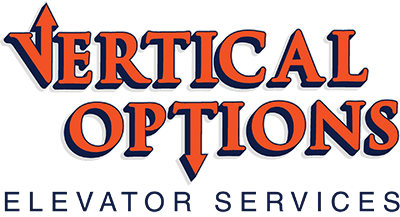ASME A17.1 ELEVATOR CODE TO ELEVATOR MODERNIZATION
With cost, safety, and energy efficiency on their minds, building owners often ask if it’s better to repair or modernize their aging elevators?
Difference between elevator repair and modernization?
Understanding how to apply the code is to recognize the difference between a repair and a modernization or alteration.
Elevator Repair: Reconditioning or renewal of parts, components, and/or subsystems necessary to keep equipment in compliance.
Elevator Modernization: Any change to equipment, including its parts, components, and/or subsystems, other than maintenance, repair, or replacement.
Coordination of your building outside the elevator equipment itself is required. Therefore, before any elevator modernization, you must consider the following questions:
- Why are you thinking about modernizing your elevator?
- Do you only need partial upgrades and repairs?
- Is this all you need to update/repair?
Elevator modernization often causes problems for owners during the project and occasionally after the elevator portion of the project is completed because the elevator code requires more work than a typical elevator contractor is trained to do.
Thinking about modernizing your elevator?
Do not simply trust an elevator contractor who claims that your equipment is obsolete. Most of the time, replacement parts can be purchased from many reputable sources, including the original equipment manufacturer (OEM).
A careful review of your maintenance agreement should verify what is and is not included. It’s common for our experts who review elevator modernization agreements to find that up to half the value of their proposal includes work already covered in the existing maintenance agreement.
Improved reliability: Covered repairs may get you what you need if you can enforce your current maintenance agreement.
Faster elevators: You may not need faster elevators; you may need smarter elevators, using smarter dispatching technology. However, if you don’t have enough elevators, modernization may not solve this problem.
Obsolete elevators: There are certainly obsolete, unreliable elevators that should be modernized.
Modernization cost: Elevator modernization costs vary greatly, depending on the type of elevator you have and any additional building work needed.
Do you only need partial upgrades and repairs to your elevator?
You may also determine that you just need to replace individual components to achieve your elevator improvement goals.
- Is this elevator on emergency power now? How will it operate after the modernization?
- Does the machine room now require air conditioning?
- Is the present electrical system adequate for the new elevator drive system?
- Is there any non-elevator equipment in the elevator machine rooms that must be removed?
- Are there any changes to the hoistway, pit, or machine room construction?
- How is the elevator connected to the fire alarm system?
How does this code change affect existing elevator equipment?
Adoption of new elevator codes does not necessarily mean that you will have to add equipment to your existing elevator to meet new codes. Elevators are required to meet the code at the time of installation. In simple terms, if your elevator was installed under 1996 code, that is the code that it must meet until an upgrade to the controls is made (modernization) at which time the elevator is required to meet current new installation codes. However, another code book, ASME A17.3 "Safety code for existing elevators", does apply to all installations regardless of when it was installed. At this time there are no requirements in ASME A17.3 requiring implementation of video emergency communications equipment like what is required for new installation or modernization.
Contact Vertical Option Elevator Services for more information regarding this code. This could affect your operation and/or project.
BROWSE OUR WEBSITE
CONTACT INFORMATION
SERVING EASTERN WASHINGTON, NORTHERN IDAHO & WESTERN MONTANA
TELEPHONE: (509) 951-6416
FAX: (888) 629-9038
E-MAIL: info@voelevator.com
ADDRESS: 732 N Napa St.
Business Hours
- Mon - Fri
- -
- Sat - Sun
- Closed


